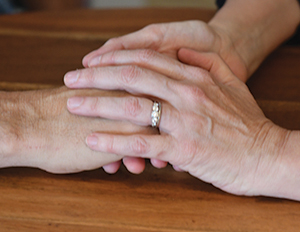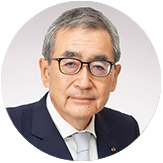
human health care-Inspired Solutions for Patients Living With Neurological Disorders
We’re taking neurology to a whole new level.

human health care-Inspired Solutions for Patients Living With Cancer
A world without cancer: we're bringing it closer every day.
Our Global Mission
Our human health care mission, the desire to contribute to patients, is our corporate philosophy and the core of our business. Established in 1992, the hhc philosophy is a common value among all employees worldwide. Spending time with patients and understanding their true needs has become the source of Eisai’s innovation.
With the introduction of EWAY 2025, our medium-term business plan, we updated our patient socialization program to include internal innovation training and enhance our commitment.
Also in EWAY 2025, Eisai selected two therapeutic areas of focus: neurology and oncology. In these areas, we believe it is important to find “Ricchi” – a Japanese term that means finding a place “where real patient needs are still unmet; where Eisai can become a frontrunner.”
Here’s How We Bring human health care To Life
Breakthrough medicines are just the beginning. human health care sparks a multitude of ways in which we improve the lives of patients, their families and caregivers. Discover how we’re supporting the metastatic breast cancer (MBC) community; providing patients with pro bono legal services; and more.
Our human health care Mission Guides Us
What does it take to make meaningful contributions to patients and their families while observing the highest level of integrity? There are 8 essential ways we maintain our ethical standards.
Explore Our Locations
See where Eisai breakthroughs happen, every step of the way from inception to distribution.
1%
To help us empathize fully with the people we serve, we spend 1% of our total business hours interacting with patients.
2B
That’s how many free DEC tablets Eisai has distributed to fight lymphatic filariasis, a neglected tropical disease transmitted by mosquitoes.
17
The number of Eisai U.S. compounds currently in clinical development (Phase 2 or later) and being evaluated for 30 indications.


